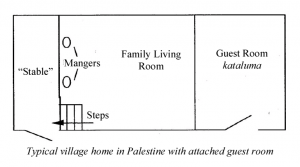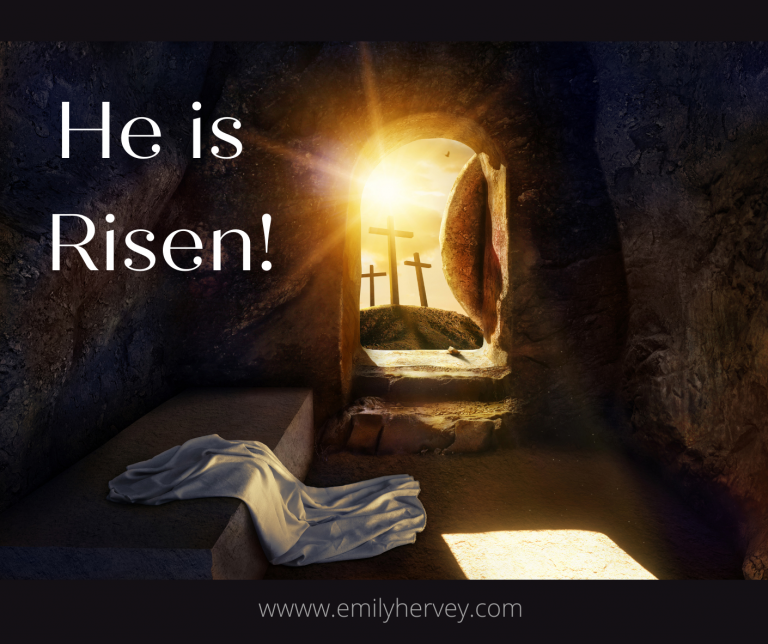Over the years I have witnessed and participated in a variety of Christmas pageants (I made a good furry sheep) and have seen plenty of Nativity crèches, from tiny wooden ornaments to “live” representations. I largely accepted the scenes as moderately accurate. I eventually learned that despite the common appearance of three Magi in the Nativity scene, they actually came much later and there were likely more than three men in the party. So I knew the depictions were certainly fallible.
About two years ago, I read “Jesus through Middle Eastern Eyes” by Ken Bailey, an excellent piece of insight into the cultural backdrop of the life of Jesus. Early in the book Bailey explores what the first Christmas looked like when integrating biblical information and cultural norms. I was rather amazed at how far off my mental picture was!
The Arrival
Our current narratives usually have Mary and Joseph traveling for days and looking for a place to stay in Bethlehem on the night Jesus was born. Because there was “no room in the inn,” they end up in a stable, or possibly a cave, surrounded by ox and donkey.
But where does the Bible say Jesus was born on the night they got to Bethlehem? And who in their right mind would ask an expectant mother to spend three or four days riding a donkey at full term? (Today’s rule that a woman past eight months pregnant is not allowed on an airplane exists for a reason!)
In fact, Luke makes it pretty clear they were already in town:
“So Joseph also went… to Bethlehem, the town of David, because he belonged to the house and line of David. He went there to register with Mary, who was pledged to be married to him and was expecting a child. While they were there, the time came for the baby to be born, and she gave birth to her first born, a son” (Luke 2:-7a, NIV).
I see no evidence of Joseph frantically running from door to door, while Mary is having contractions until an (unmentioned) “innkeeper” feels sorry enough to grant them room in a stable. From a cultural perspective, Joseph has no need to book rooms on Expedia when he’s going to the town of his lineage. In one article Bailey writes:
“The Middle Easterner is profoundly attached to his village of family origin. Indeed, though he himself may not have been born there, his home village is an integral part of his identity. Even if he has never been there before he can appear suddenly at the home of a distant cousin, recite his genealogy, and he is among friends…If Joseph did have some member of the extended family resident in the village, he was honor-bound to seek them out. Furthermore, if he did not have family or friends in the village, as a member of the famous house of David, for the “sake of David,” he would still be welcomed into almost any village home. Yet, if we reject both of these alternatives and assume that Joseph did not have family or friends, and did not appeal to the name of David, even if he was a total stranger appearing in a strange village— still he would be able to find shelter for the birth of a child. Indeed, the birth of a child is a special occasion in any culture anywhere in the world. The idea that a woman about to give birth cannot find shelter and assistance from the village women in a Middle Eastern village, even if she is a total stranger, staggers the imagination.”
Yet, we do see the words “inn” and “manger” at the end of verse 7: “She wrapped him in cloths and placed him in a manger, because there was no room for them in the inn.” Bailey and other scholars shed some light on the scene.
The Inn
Reading the Bible in English means that all words we see are not in their original form; they have been interpreted and translated. In this passage the word used was kataluma. Although most translations use “inn” in this verse, they translate the same word as “guest room” the only other place kataluma appears, in Luke 22:11. That guest room was where Jesus had the Last Supper with his disciples, which was certainly not in a motel.
The other times we read the English word “inn” (e.g. where the Good Samaritan took the wounded man), it is the translation of a different word (e.g. pandokheion). Bailey goes much more in depth, to explain the differences of these words.
When reading “guest room,” which appears consistent with other uses of the word, it immediately fits  with the likelihood that Joseph and Mary are staying at a relative’s house, apparently not the only (nor most honored) visitors residing there.
with the likelihood that Joseph and Mary are staying at a relative’s house, apparently not the only (nor most honored) visitors residing there.
The Manger
So where does a manger fit in this picture? It might help to know more about what a typical home probably looked like. Bailey explains,
“in the one-room peasant homes of Palestine and Lebanon, the manger is built into the floor of the house. The standard one-room village home consists of a living area for the family, mangers built into the floor for feeding the animals (mostly at night), and a small area approximately four feet lower than the living area into which the family cow or donkey is brought at night.”
Bailey then describes other Biblical passages and historical references that support that support such a layout of a common house in Palestine.
Image from a paper by Monte F. Shelley (2010) describing Bailey’s work.
Jesus wasn’t born in a palace, nor the best room of the house. But he was surrounded by a welcoming environment, inclusion in daily family life, and sharing community space, even with animals brought in at night (though probably not an ox).
To me, these pieces seem to fit harmoniously with the Big Story. The idea of Jesus being born in a peasant home, just like other common people, corresponds with the critical principle of him being fully human from birth to death.
“The Word became flesh and made his dwelling among us…” (John 2:14, NIV).
This Christmas
Given my own ignorance for many years, I have no grounds for judging others for annually presenting what is likely a very inaccurate picture of Christ’s birth. But I do value truth and understanding, which is why I decided to share what I learned with others. What about you?
Perhaps there is an artist out there ready to paint a new picture or sculpt a new crèche.
Perhaps there is a musician willing to write a new Christmas Carol.
Perhaps another writer will creatively describe how the story unfolded in this setting.
If that’s you, I’d love to see the outcomes!
But regardless of the details (since there are many we will never know on this earth), let’s make sure to keep focusing on Jesus, thanking him for the incredible love he showed by humbling himself to become a servant, and thinking of ways we can show that love to others.





I find it’s a rich thing to be able to visualize the story more accurately. I’m glad you’re reading and sharing about this, Emily! Just for curiosity’s sake…how did you stumble on my version of the story?
Thanks for your creative rendition, Elisabeth.
I believe the link was in a comment on the Fb post: https://www.facebook.com/DrEmilyHervey
Aha! Well, thanks for popping in and commenting!
Very interesting. We had just been discussing this in our SS class at Redemption Hill Church in Whittier, CA. Just sent it to Dr. Bob Crawford, who is now retired but was a professor at Biola University who is teacher of our SS class. Crawfords were actually the ones who suggested that Dean could help us close out our things in Zambia in 2012 when Rich became ill and we could no longer return. Dean eventually did go. We have been in touch with him through the ensuing years.
You invited us to your wedding and we (I) actually drove out to be there at your wedding from La Mirada, CA.. Thank you for inviting us. Thank you for the insight of the article. God bless you both. Gracie Siemens